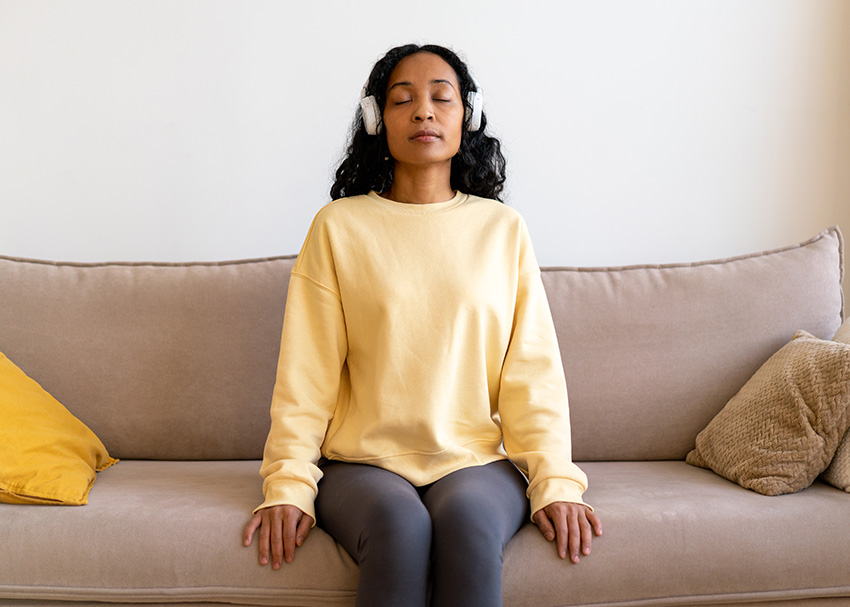How Music Therapy Can Heal Body and Mind by Shannon Crocker and Kim Tapper
What is music therapy, and how does it work?
Music therapy is the use of music to improve individuals’ and groups’ physical, mental, and emotional well-being. Music therapy can involve listening to music, playing instruments, singing, composing, improvising, or moving to music. Still, unlike music educators or musicians, music therapists are clinically trained to use music to address non-musical, therapeutic goals. Music therapists are Board-certified, trained professionals who use music to manage their client’s specific needs and goals, such as reducing pain, anxiety, depression, and stress, enhancing communication, memory, or cognition, or promoting social and emotional skills, self-expression, or creativity.
Music therapy works by stimulating different areas of the brain that are involved in processing emotions, memories, language, and motor functions. Music can also affect the autonomic nervous system, which regulates heart rate, blood pressure, breathing, and other vital functions. Music can also create a sense of connection, belonging, or identity, especially when shared with others or linked to personal or cultural meanings.
What are the benefits of music therapy for traditional purposes?
Music therapy has been used in different settings, such as hospitals, schools, nursing homes, rehabilitation centers, hospices, and community centers. Some of the benefits of music therapy for traditional purposes include:
– Improving physical health and functioning, such as reducing pain, nausea, fatigue, or muscle tension, improving the immune system, wound healing, or motor skills, or enhancing physical endurance, coordination, or mobility.
– Improving mental health and functioning, such as reducing anxiety, depression, or trauma symptoms, improving mood, self-esteem, or coping skills, or enhancing cognitive abilities, such as attention, memory, or problem-solving.
– Improving emotional health and functioning, such as reducing anger, fear, or sadness, improving emotional regulation or expression, or enhancing empathy, compassion, or resilience.
– Improving social health and functioning, such as reducing isolation, loneliness, or conflict, improving communication, interaction, or cooperation, or enhancing social skills, relationships, or support networks.
– Improving spiritual health and functioning, such as reducing existential distress, enhancing meaning, purpose, or hope, or facilitating transcendence, connection, or growth.
What are the potential benefits of music therapy for veterans and law enforcement?
Music therapy can benefit veterans and law enforcement personnel who may face unique challenges and risks in their work and life, such as exposure to violence, trauma, injury, or death, high levels of stress, pressure, or responsibility, or difficulties in adjusting to civilian life, family, or society. When dealing with trauma, the impact has happened on a body level, and more significant healing can occur if it involves somatic experiences (whole-body) rather than only using verbal processing. Music can also be more accessible to a person, especially when they cannot speak about what has happened. Other benefits of music therapy for veterans and law enforcement include:
– Providing a safe, supportive, and non-judgmental space to express and process emotions, thoughts, and experiences related to their work and life.
– Helping to cope with the effects of post-traumatic stress disorder (PTSD), such as flashbacks, nightmares, hypervigilance, or avoidance, by using music to calm, soothe, or distract the mind and body, or to confront, reframe, or integrate the traumatic memories.
– This link can help you find groups and programs around the country that specialize in veterans’ law enforcement and music: https://www.operationwearehere.com/musictherapy.html
What if I don’t have access to a music therapist or don’t want to go to therapy?
Music therapists practice nationwide, and you can use this link to find someone near you: https://www.musictherapy.org/about/find/. Suppose you do not have anyone in your area or are uncomfortable reaching out for help. In that case, you can use music for yourself or your child in several ways that can be therapeutic for reducing anxiety, stress, and loneliness and creating connections.
– Make playlists for moods (happy, sad, frustrated, unmotivated, etc.). Try to find songs that match your mood and express your initial emotions and those that help ease you into your desired mood. For example, if you’re anxious or frustrated, your playlist might start with songs that match that mood and make you feel you are not alone, and after a few of those songs, add pieces that help you breathe easier and make you feel calmer so that as you listen, you get the frustration or anxiety out and replace it with more ease.
– Try writing a song! You don’t have to be a musician or even a good writer. Just make up a tune, write out your thoughts and feelings, and see how it feels to sing it out loud, even if it’s just to yourself!
– Grab a drum (or Tupperware or pots and pans) and make some noise (in a place you won’t disturb others!) Physically getting our emotions out in healthy ways releases tension and stress, and the vibrations can create a feedback loop that may provide soothing. When you finish, try to sit in silence for a few deep breaths and see how you feel.
– Pick a family song that brings you joy or connectedness and have a dance party (whether you think you can dance or not!). Combining music and movement has tremendous benefits! ❦
About the Authors

Kim Tapper (Co-Founder of A Place To Be) and Shannon Crocker (A Place To Be Board Member).
A Place To Be is an award-winning nonprofit based in Loudoun County, Virginia, using music therapy, performance, and expressive arts to create community, belonging, and hope. Learn more at: www.aplacetobeva.org
